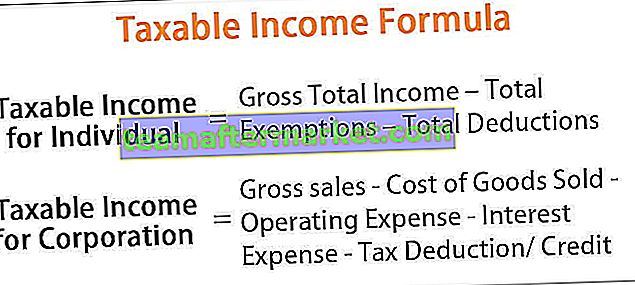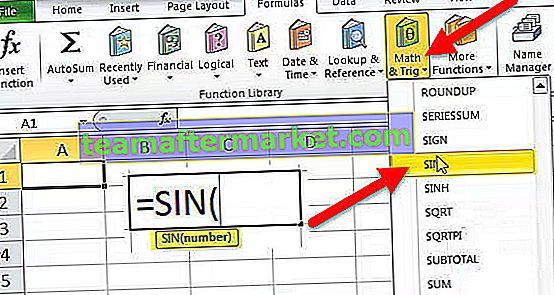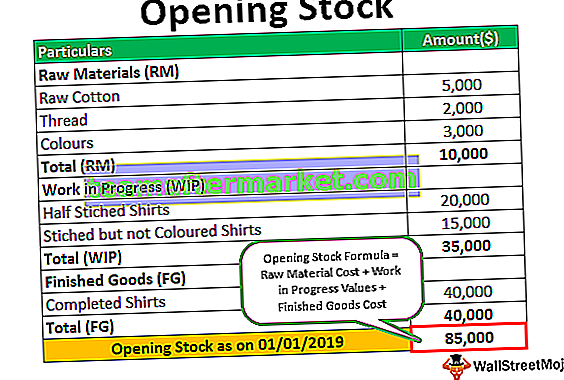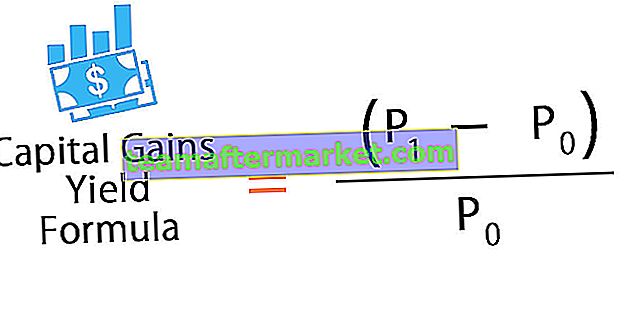Quick Ratio Definition
Quick ratio, also known as the acid test ratio measure the ability of the company to repay the short term debts with the help of the most liquid assets and it is calculated by adding total cash and equivalents, accounts receivable and the marketable investments of the company and then dividing it by its total current liabilities.
Due to the prohibition of inventory from the formula, this ratio is a better sign than the current ratio of the ability of a company to pay its instant obligations. It is also known as the Acid test ratio or liquid ratio.
Quick ratio Formula = Quick assets / Quick Liabilities. = (Cash and Cash Equivalents + Accounts receivables) / (Current liabilities – Bank overdraft)
A ratio of 1: 1 indicates a highly solvent position. This ratio serves as a supplement to the current ratio in analyzing liquidity.
P&G’s current ratio is healthy at 1.098x in 2016; however, its quick ratio is 0.576x. This implies that a significant amount of P&G current asset is stuck in lesser liquid assets like Inventory or prepaid expenses.

The Importance of Quick ratio
This ratio is one of the major tools for decision-making. It previews the ability of the company to make settlement its quick liabilities in a very short notice period.
- This ratio eliminates the closing stock from the calculation, which may not be necessary be always be taken as a liquid, thereby giving a more suitable profile of the liquidity position of the company.
- Since closing stock is separated from current assets and bank overdrafts and cash credit are eliminated from current liabilities as they are usually secured by closing stock, thereby preparing the ratio more worthy in ensuring the liquidity position of the company.
- Evaluation of closing stock can be sensitive, and it may not always be at saleable value. Therefore, the quick ratio is not impaired, as there is no requirement for the valuation of the closing stock.
- Closing stock can be very seasonal, and over a yearly period, it may vary in quantities. I contemplate, it may collapse or escalate liquidity status. By ignoring closing stock from the calculation, the ratio does away with this issue.
- In a sinking industry, which is generally may have a very high level of closing stock, this ratio will help in providing more authentic repayment ability of the company against the current ratio, including closing stock.
- Because of the major inventory base, the short-term financial strength of a company may be overstated if the current ratio is utilized. By using this ratio, this situation can be tackled and will limit companies getting an additional loan, the servicing of which may not be as simple as reflected by the current ratio.
Interpretation Quick Ratio
- It is a sign of solvency of an organization and should be analyzed over a time period and also in the circumstances of the industry the company controls in.
- Basically, companies should focus on continuing to keep this ratio that maintains adequate leverage against liquidity risk, given the variables in a particular sector of business, among other considerations.
- More uncertain the business environment, the more it is likely that companies would keep higher quick ratios. Reversely, where cash flows are constant and foreseeable, companies would entreat to maintain the quick ratio at relatively lower levels. In any case, companies must attain the correct balance between liquidity risk caused due to a low ratio and the risk of loss caused due to a high ratio.
- An acid ratio that is higher than the average of the industry may be advised that the company is investing too many resources in the working capital of the business, which may more profitably be used elsewhere.
- If a company has extra supplementary cash, it may consider investing the excess funds in new ventures. In case the company is out of investment choices, it may be advisable to return the surplus funds to shareholders in the form of hiked dividend payments.
- The Acid Test Ratio, which is lower than the industry average, may suggest that the company is taking a high amount of risk by not maintaining a proper shield of liquid resources. Otherwise, a company may have a lower ratio due to better credit terms with suppliers than its competitors.
- When interpreting and analyzing the acid ratio over various periods, it is necessary to take into account seasonal changes in some industries which may produce the ratio to be traditionally higher or lower at certain times of the year as seasonal businesses experience illegitimate effusion of activities leading to changing levels current assets and liabilities over the time.
Analysis of Quick Ratio
The following are the illustration through which calculation and interpretation of the quick ratio provided.
Example 1
The following are the information extracted from audited records at a large size industrial company. (Amount in $)
| Particulars | 2011 | 2012 | 2013 | 2014 | 2015 |
| Current assets | 1,10,000 | 90,000 | 80,000 | 75,000 | 65,000 |
| Inventory | 8,000 | 12,000 | 8,000 | 5,000 | 5,000 |
| Current Liabilities | 66,000 | 70,000 | 82,000 | 1,00,000 | 1,00,000 |
| Bank overdraft | 6,000 | 5,000 | 2,000 | 0 | 0 |
Assume that Current Assets = Cash and Cash Equivalents + Accounts Receivables + Inventory. There are no other items included in Current Assets.
You are required to calculate the quick ratio and analyze the trend of the ratio for judging the short term liquidity and solvency of the company.
Answer to Example 1.
Calculation of the quick ratio of the company for the following years:
(Amount in $)
| Particulars | 2011 | 2012 | 2013 | 2014 | 2015 |
| Current assets ( A ) | 1,10,000 | 90,000 | 80,000 | 75,000 | 65,000 |
| Less: Inventory (B) | 8,000 | 12,000 | 8,000 | 5,000 | 5,000 |
| Quick Assets (C) = (A – B ) | 1,02,000 | 78,000 | 72,000 | 70,000 | 60,000 |
| Current Liabilities ( D ) | 66,000 | 70,000 | 82,000 | 80,000 | 80,000 |
| Less: Bank overdraft ( E ) | 6,000 | 5,000 | 2,000 | 0 | 0 |
| Quick Liabilities (F) = (D – E) | 60,000 | 65,000 | 80,000 | 80,000 | 80,000 |
| Quick Ratio = ( C ) / ( F ) | 1.7 | 1.2 | 0.9 | 0.875 | 0.75 |
From the above-calculated data, we analyzed that the quick ratio has been fallen down from 1.7 in 2011 to 0.6 in 2015. This must mean that most of the current assets are locked up in stocks over a period of time. The ideal standard quick ratio is 1: 1. It means that the company is not in a position to meet its immediate current liabilities; it may lead to technical solvency. Hence, steps should be taken to reduce the investment in the inventory and see that the ratio is above level 1: 1.
The ideal standard ratio is 1: 1. It means that the company is not in a position to meet its immediate current liabilities; it may lead to technical solvency. Hence, steps should be taken to reduce the investment in the inventory and see that the ratio is above level 1: 1.
Example 2
XYZ Limited provides you the following information for the year ending 31st March 2015.
- Working Capital = $45,000
- Current ratio = 2.5 Inventory = $40,000
You are required to calculate and interpret a quick ratio.
Answer to Example 2
- Calculation of Current assets and Current liabilities
Given working capital is $ 45,000
Current ratio = 2.5
= Current assets / Current liabilities = 2.5 = Current assets = 2.5 * Current Liabilities
So, working capital = Current Assets – Current Liabilities
= 45,000 = 2.5 Current Liabilities – current liabilities
= 1.5 * current liabilities = 45,000
= current liabilities = 45,000 / 1.5 = 30,000
Therefore, current assets = 2.5 * current liabilities = 2.5 * 30,000 = 75,000
So, current assets and current liabilities are $ 75,000 and $ 30,000 respectively.
- Calculation of acid test ratio
Given Inventory = $40,000
Current assets = $75,000
So, the Quick assets = Current assets – Inventory = $ 75,000 – $ 40,000 = $ 35,000
As there is no bank overdraft available Current liabilities will be considered as Quick liabilities.
So, the Quick liabilities = $ 30,000
Therefore,
Ratio = Quick assets / Quick liabilities
= 35,000 / 30,000
= 1.167
As the calculated acid test ratio is 1.167, which is more than the ideal ratio 1, it reflects that the company is better able to meet its obligation through quick assets.
Colgate Example
Let us now look at the calculations in Colgate.

The ratio of Colgate is relatively healthy (between 0.56x – 0.73x). This acid test shows us the company’s ability to pay off short term liabilities using Receivables and Cash & Cash Equivalents.
Below is a quick comparison of the Ratio of Colgate’s vs. P&G vs. Unilever
 source: ycharts
source: ycharts
Colgate hat im Vergleich zu seinen Peers ein sehr gesundes Verhältnis.
Während das Quick Ratio von Unilever in den letzten 5 bis 6 Jahren zurückgegangen ist, stellen wir auch fest, dass das P & G-Verhältnis viel niedriger ist als das von Colgate.
Microsoft Beispiel
Wie aus der folgenden Grafik hervorgeht, beträgt die Cash Ratio von Microsoft nur 0,110x. Das schnelle Verhältnis beträgt jedoch massive 2,216x.
Quelle: ycharts
Microsoft Quick Ratio ist ziemlich hoch, vor allem aufgrund kurzfristiger Investitionen von rund 106,73 Milliarden US-Dollar! Dies bringt Microsoft in Bezug auf Liquidität / Solvenz in eine sehr komfortable Position.

Quelle: Microsoft SEC Filings
Quick Ratio Video
Fazit
Wie wir hier bemerken, kann das Umlaufvermögen große Bestandsmengen enthalten und die vorausbezahlten Kosten sind möglicherweise nicht liquide. Daher werden solche Artikel, einschließlich des Lagerbestands, die aktuelle Quote unter dem Gesichtspunkt der unmittelbaren Liquidität verzerren. Quick Ratio löst dieses Problem, indem das Inventar nicht berücksichtigt wird. Es werden nur die liquidesten Vermögenswerte berücksichtigt, einschließlich Zahlungsmittel und Zahlungsmitteläquivalente sowie Forderungen. Eine Quote, die über dem Branchendurchschnitt liegt, kann bedeuten, dass das Unternehmen zu viel seiner Ressourcen in das Betriebskapital des Unternehmens investiert, das an anderer Stelle möglicherweise rentabler ist. Wenn die schnelle Quote jedoch unter dem Branchendurchschnitt liegt, deutet dies darauf hin, dass das Unternehmen ein hohes Risiko eingeht und keine ausreichende Liquidität aufrechterhält.









